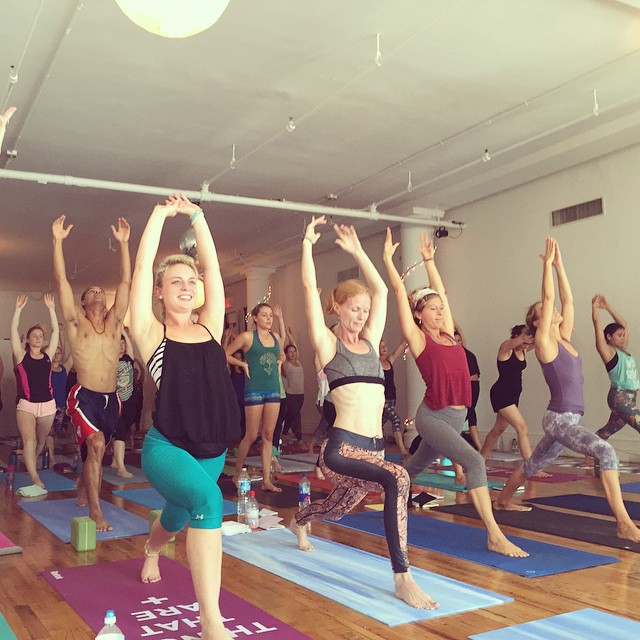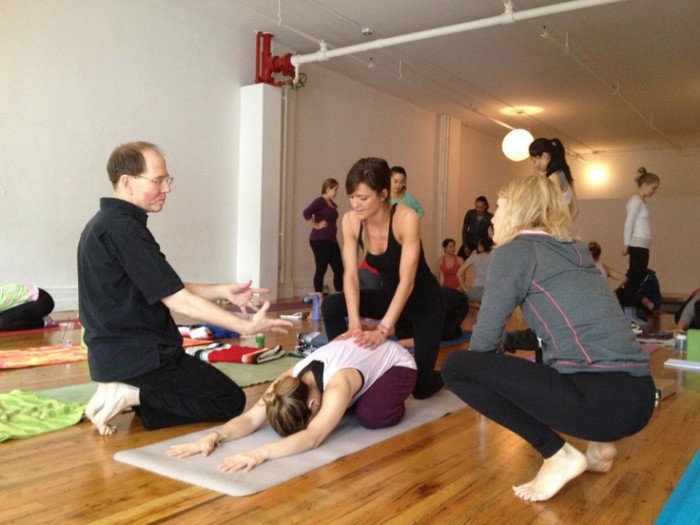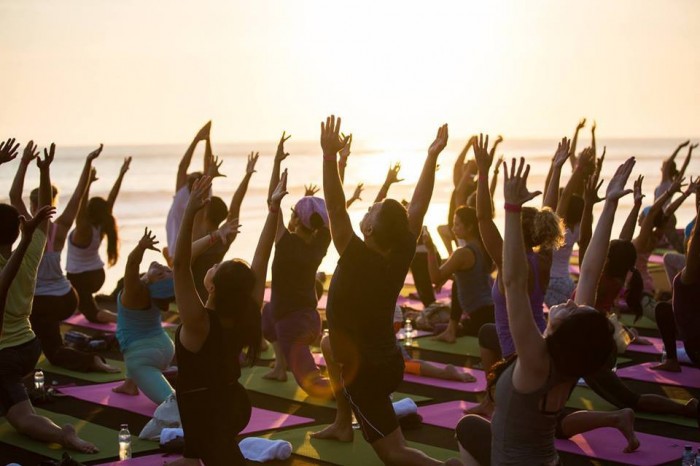I’ve been thinking about the concept of alignment lately, how it’s understood and used in teaching and practicing yoga.
Some people think about it this way:
‘In yoga, the main focus of touch is on bodily alignment and improvement.
Teachers touch students to help them align better. We all know that. What many practitioners don’t realize is that sometimes they’re so out of alignment that they might actually hurt themselves.
Posture alignment refers to how your muscles are integrated and bones are aligned to support your body for optimal movement during exercise. The aim of good posture alignment is to establish a solid foundation with your body, so you can support your limbs, back, and head while you exercise.’
And from the other end of the yoga theory spectrum:
‘Instead of postural forms (static asanas), it is the individual animating spirit that should motivate our yoga practice. Energy-based, spontaneous yoga is like the developmental movements and perpetual stretchings of infants. This is action of the body in which reason takes no part, and which does not originate as an idea. Yogis perform actions with their bodies like the movements of children.’
When we ‘correct’ the alignment or posture of a yoga student through touch or word, we are implying that there are universal principles of yogic alignment that we ‘know’ and should be teaching others. It’s as if the goal of yoga practice is to achieve some kind of ideal symmetry or balance, as if a perfect pose awaits our mastery.
Really?! Think of how we first learn to move as babies and children. It’s not through instruction, but by spontaneously experimenting, playing with movement, and finding the way that works best for us. A healthy kid resists being helped. She wants to figure it out for herself. No one taught us how to reach for our mothers, to crawl, or to walk. We generally teach ourselves yoga the same way. For some students, the challenge in a yoga class is how to tune out the teacher and tune into themselves!
– by Sam Berlind
About Strala Yoga Training
Strala combines the movement and healing wisdom of tai chi with the form vocabularies of yoga, tai chi, qigong, and Traditional Chinese and Japanese Medicine, to help people release stress, move easily through challenge, and live radiantly inspiring lives.
It begins with a mindset, that says our best way to get where we’re going is to feel good along the way. It also works miracles for whole health, helping us to find ease in our bodies and minds, and create the right conditions both for healing and optimal performance.
In our Strala Yoga Training Courses, you learn to shape your destiny on every level that counts, from your psychology, chemistry and neurology, to your chromosomes and even gene expression. The unique set of skills you develop – for connecting with yourself and others, unblocking your energy, healing what needs healing and accomplishing challenge with ease – uncovers your ability to create the life you want, and be an inspiring leader to the people around you.
Who’s What’s and When’s of Strala Yoga Training
Can your yoga teacher possibly know as much as you do about how you feel and function? Or about how, exactly, you should rotate a shoulder or tilt your pelvis or place your foot to move more easily and comfortably?
When you guide a yoga class, you are creating a relationship with the student whose posture you may have the urge to correct. Ask yourself: have I succeeded in changing someone else in my (non-yoga) life through my intentions and ‘superior knowledge’? Or did they choose to change themselves? Touch is wonderful when it isn’t manipulative.
Consider this through a different perspective, here from someone teaching and practicing shiatsu for 27 years:
‘In classes with my advanced shiatsu students, we invite guests to receive sessions. Students invariably attempt to ‘correct’ the positions our guests choose, even before starting the ‘treatment.’
I point out that we are perfectly self-expressive through our bodies, both consciously and unconsciously, and that their ‘clients’ have just diagnosed themselves spontaneously through their postural choices. Just as in sleep, we heal ourselves unconsciously – imagine telling someone what position they should attempt to sleep in.
‘Don’t instruct your clients, don’t improve them,’ I suggest. ‘Take care of yourselves and be an example of health and balance. Use your own breath and movement and presence to inspire others. Show, don’t tell.’
In my own practice, clients sometimes come seeking some kind of correction, fixing, healing, or realignment. My responsibility is to remind them that they have the knowledge, power and ability to change themselves. Each person has the power to make the small or large adjustments necessary to find the right balance between mobility and stability in their lives – which is exactly what you can do in your yoga practice.
– Sam Berlind
Shiatsu master Sam Berlind lead the Ohashiatsu School in New York City for 20 years. Shiatsu is a traditional Japanese bodywork method, based on the principles of acupuncture. It has evolved into an innovative healing modality that incorporates movement, meditation, and connection. Incredibly effective for the treatment of common injuries, as well as chronic pain and disabilities, shiatsu skills provide a great complement to yoga practice and leadership. Sam studied Zen Shiatsu, Traditional Chinese Medicine, and martial arts, and began practicing yoga in the 1980s. Sam is part of the Strala Training Faculty, leading sections on touch, support and healing.



